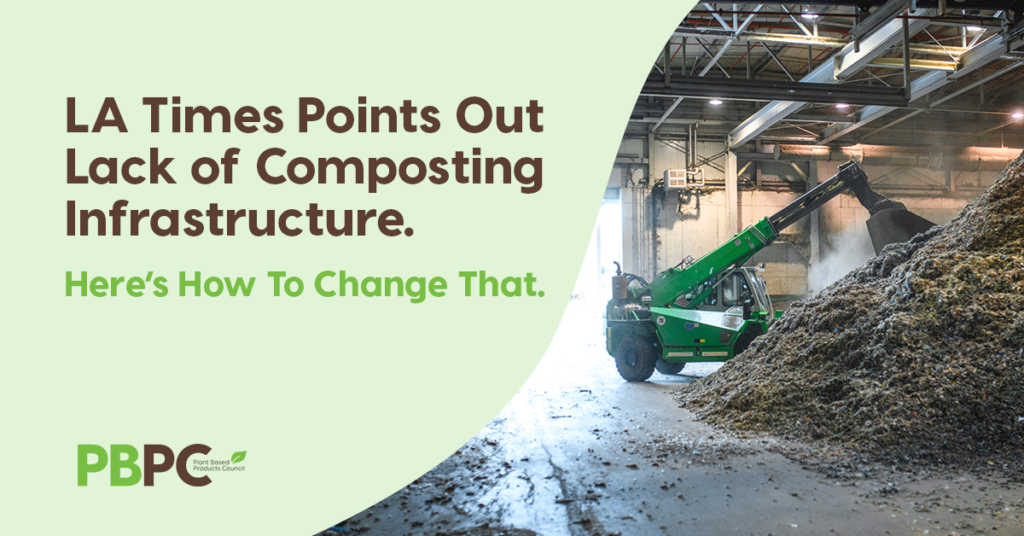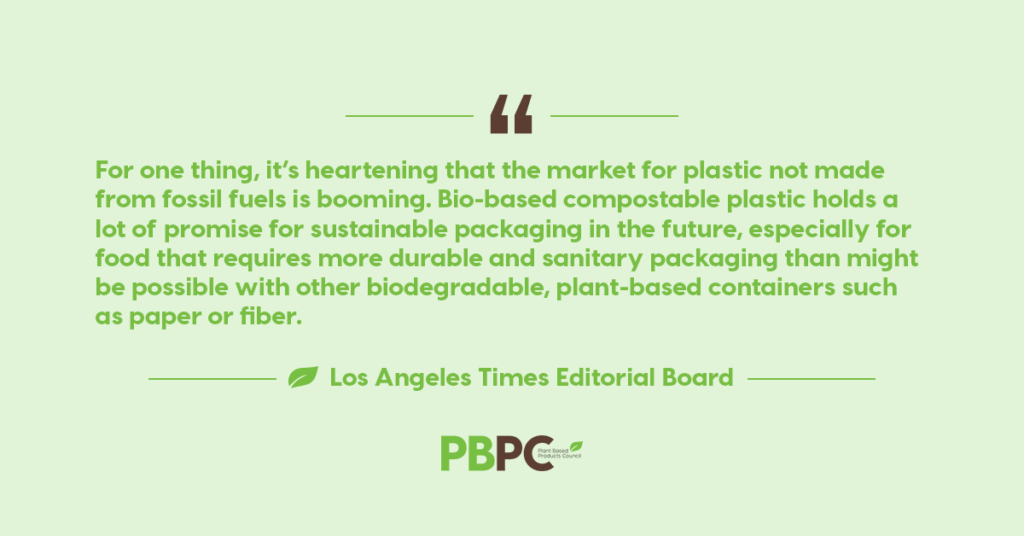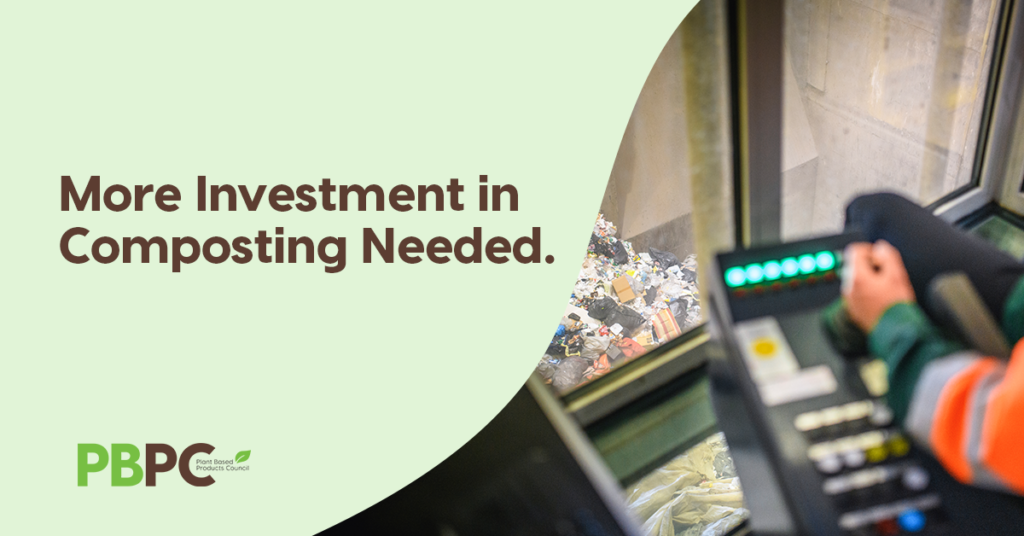1/23
Hey LA Times, PBPC is on it!
It may be difficult to imagine today, but the advent of the automobile was initially met with widespread criticism and negativity. Some even declared the concept a failure because America’s roads couldn’t properly support this new mode of travel.
Of course, we all understand that’s not how innovations are adopted. It requires collective action by multiple stakeholders, including governments and businesses. This is especially true when innovation involves updating our infrastructure.

So, as we’ve covered before in this blog series, it has not been surprising to see media outlets in recent months dismissing the idea of compostable plastic and packaging products due to the current shortcomings of America’s waste management systems.
Just last month, the Los Angeles Times editorial board echoed those concerns, accurately noting that compostable plastic and packaging products aren’t “being composted in any substantial way as yet.”
Despite an unfortunately negative headline, the Times provided a thoughtful review of the challenges that compostable bio-plastics face. Further, the Times editorial noted:
“For one thing, it’s heartening that the market for plastic not made from fossil fuels is booming. Bio-based compostable plastic holds a lot of promise for sustainable packaging in the future, especially for food that requires more durable and sanitary packaging than might be possible with other biodegradable, plant-based containers such as paper or fiber.”
So, why the pessimistic tone in the editorial? We have work to do. The good news is that PBPC is on it and, credit to the Times, it has expressly encouraged some of that progress. Let’s look at the challenges the Times identified.

The Times argues, “[T]here’s confusion about what compostable plastic is.” We agree. That is why PBPC has established a foundation to help educate the public and push back on false promises about bio-based plastics. It would have been nice if the Times would have used their editorial to set some facts straight, rather than simply citing points of confusion.
For example, no product should be called biodegradable unless it breaks down at the molecular level in nature within a reasonable period of time. That term should never be used interchangeably with “compostable,” which refers to products that require the sustained conditions, including elevated temperatures, of a well operated composting facility. These facilities pipe air into properly mixed composting materials to provide the conditions that break down today’s compostable plastics. Our experience is that people who compost at home are knowledgeable and have no trouble understanding that the conditions of home-composting do not meet the standards of commercial composting operations.
We disagree with the Times suggestion that the situation is complicated by “the fact that not all plastic made from plants can be composted.” Some very promising bio-based plastics are not compostable, but aimed at the recycled plastics market. We use plastics in many different ways. At least with today’s technology, the things that make some plastics compostable also mean that they will not function well in some plastic uses, such as beverage containers.
Recyclable bio-based plastics have the potential to not only reduce the carbon footprint of PET, the leading recyclable plastic, but also to strengthen it and make it a better barrier to air penetration. As a result, we are very enthusiastic about the prospects for blending recyclable bio-based plastic with PET to make beverage bottles that use less overall plastic, weigh less, and provide superior protection from air penetration, thus opening potential for use in more products.
We should instead ensure that only products suited for commercial composting should be marked as “compostable” and meet ASTM D6400 certification requirements. Discussions about biodegradable materials should be approached with great care to ensure there is no suggestion that materials may responsibly be left outside of proper waste disposal systems. The last thing we need is any risk that more materials will wind up in our oceans. Materials are “recyclable,” “certified compostable,” or landfill trash.

The Times is also right that more needs to be done to facilitate recognition of compostable plastics, lest they be needlessly routed to the landfill. They point out that “[f]ew cities have the infrastructure in place to process compostable plastic at the moment.” This is why we have joined with California thought leaders in support of a ballot initiative that would provide a multi-pronged approach to building the composting infrastructure that is needed.
This initiative would be about far more than simply realizing the potential of bio-based certified compostable materials. Landfills are the third largest emitter of methane, a greenhouse gas roughly 30 times more potent than CO2. With composting more affordable than landfills, a robust composting infrastructure has the potential to reduce waste reduction costs and greenhouse gas emissions. Certified compostable plastics can help achieve that potential by replacing conventional plastics, which is a leading adulterant of compostable organic materials.
We hope this Times editorial will spur more thoughtful discussions about the challenges and possibilities of compostable products. In the meantime, we will continue to focus on educating consumers about alternatives to legacy materials while supporting efforts to transition to a waste management system that can better process these innovative technologies.
